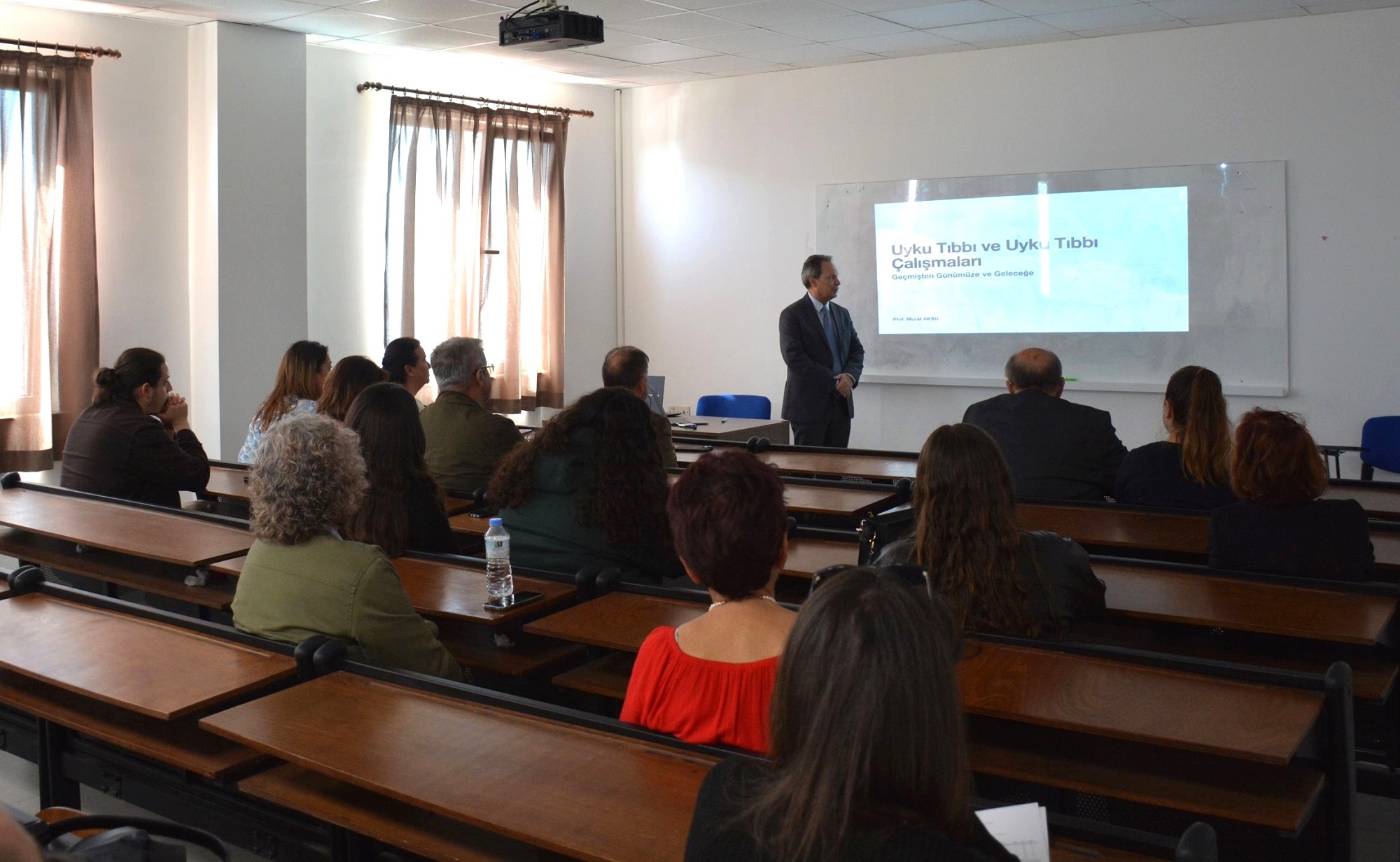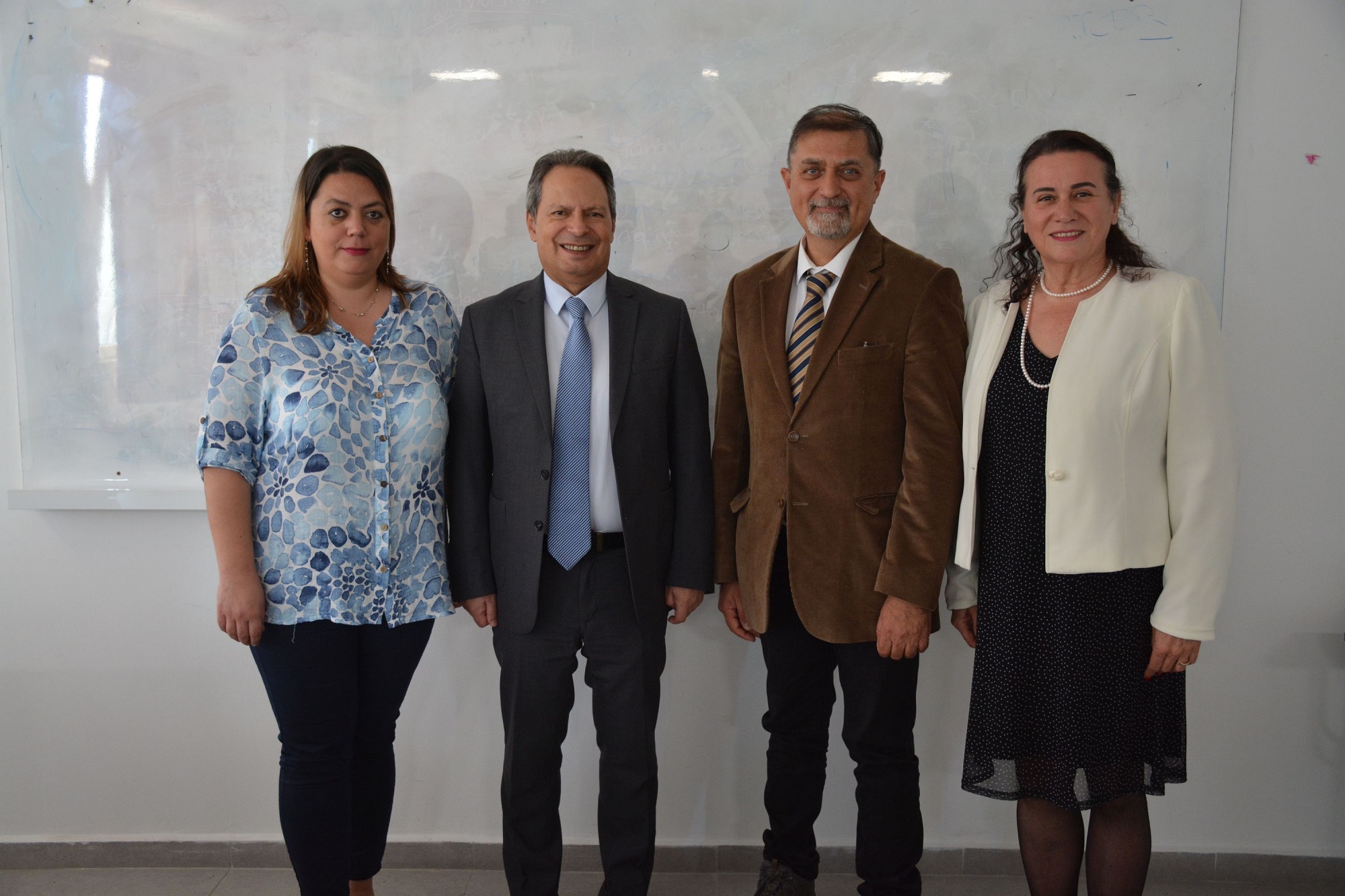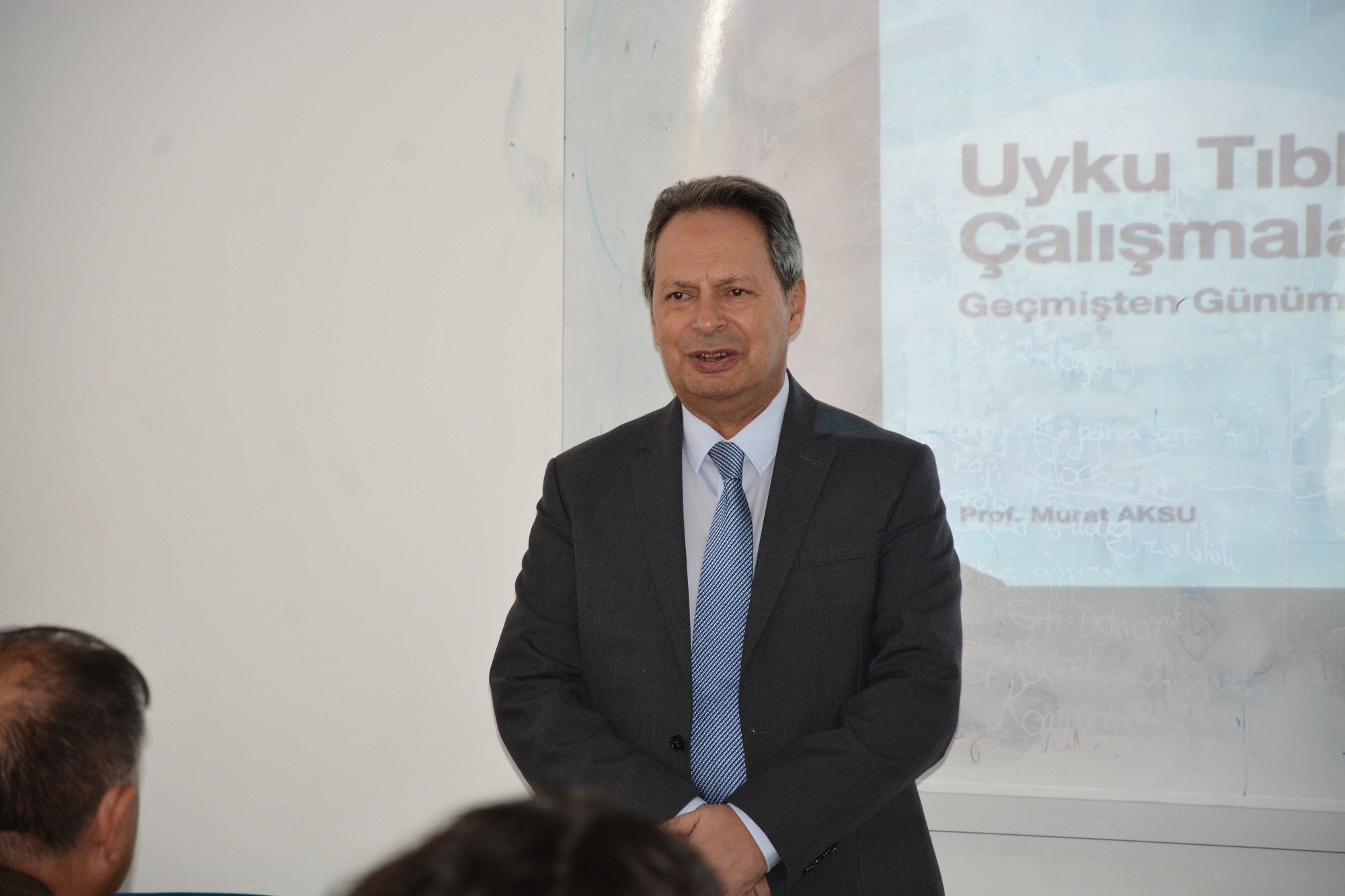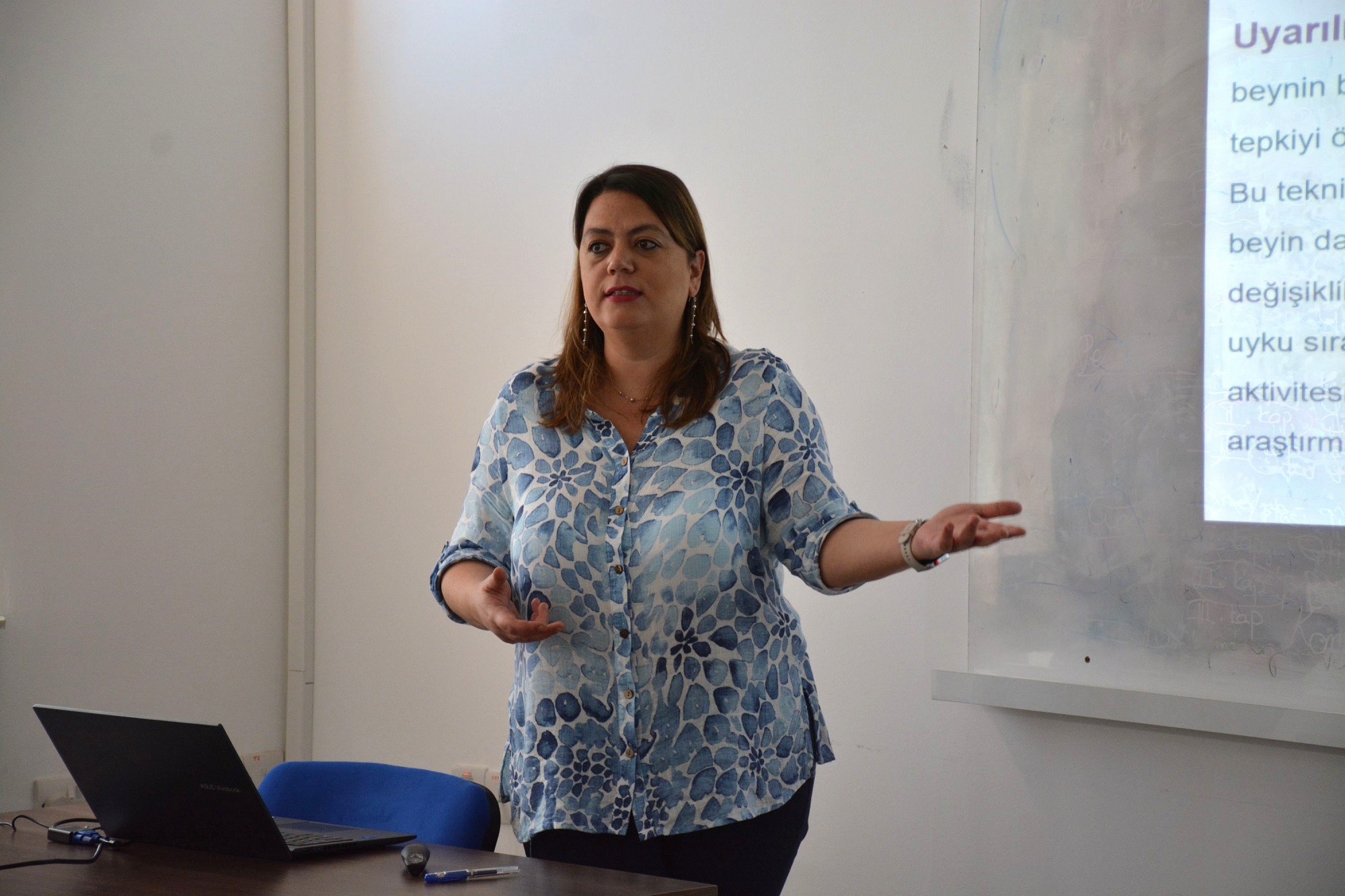
On “World Sleep Day”, the past, present and future of sleep were discussed at a symposium held at Near East University!
As part of “World Sleep Day”, which is celebrated every year in March to draw attention to the importance of healthy sleep and to raise awareness about sleep disorders, every aspect of sleep was discussed at a symposium at Near East University. The “Past, Present and Future in Sleep Studies” symposium, carried out in collaboration with Near East University Faculty of Health Sciences, Brain and Consciousness States Research Center and Turkish Sleep Medicine Association, was held with intense participation.

The symposium was moderated by Near East University Faculty of Health Sciences Dean Prof. Dr. Adile Öniz. The symposium, which gathered academicians who are experts in their fields, featured Asian Sleep Medicine Society Board Member and Former President of the Sleep Medicine Association Prof. Dr. Murat Aksu, Near East University Faculty of Health Sciences Vice Dean Assoc. Gonca İnanç and Brain and Consciousness States Research Center (BEBAM) President Prof. Dr. Murat Özgören as speakers.
In the symposium where sleep science was discussed from different aspects, topics such as “Sleep Studies Based on Sleep Medicine”, “Sleep: Selections from Today” and “Sleep: Reflections from the Past to the Future” offered the participants the opportunity to follow the development of sleep science from past to present. The Q&A section at the end of the symposium, which attracted great interest from academics and students, aimed to create awareness about sleep health by providing an interactive platform.

Prof. Dr. Murat Aksu: “Instead of working long hours, you can be more productive with a good sleep!”
Stating that sleep disorders directly affect individual health, Asian Sleep Medicine Society Board Member and Former Sleep Medicine Society President Prof. Dr. Murat Aksu emphasized that the balance of sleep and wakefulness is provided by “circadian rhythm and hormonal regulation”. In his presentation, Prof. Dr. Murat Aksu, who described the mimosa flower as an example of nature’s biological clock, said, “The mimosa flower opens during the day and closes at night. The fact that it continues this cycle even in an environment without light shows that it has an internal clock mechanism. This discovery has led to significant advances in the discovery of circadian genes in the past.” Prof. Dr. Murat Aksu, who said “When we sleep well, we are ready for wakefulness.” emphasized that sleep duration and quality are related to cardiovascular diseases, diabetes and neurodegenerative disorders and that early diagnosis of sleep disorders is of vital importance.
Prof. Dr. Murat Aksu, who is also the Head of Acıbadem University Neurology Department, stated that sleep is divided into two as “NonREM” and “REM sleep.” Emphasizing that the discovery of REM sleep is a major turning point in sleep medicine, Prof. Dr. Murat Aksu stated that this sleep includes emotional dreams, that some parts of the brain become more passive during this process and that the body goes into temporary paralysis. Reminding that sleep medicine was accepted as an official branch of medicine in the USA in 1970, Prof. Dr. Murat Aksu also touched on sleep disorders. Stating that quality sleep is indispensable for success, Prof. Dr. Murat Aksu gave the following message; “Instead of working long hours, you can be more productive with a good sleep.”

Prof. Dr. Murat Özgören: “We believe that our studies will enable the development of more sensitive and effective treatment methods!”
Discussing the historical development of sleep science, Prof. Dr. Murat Özgören stated that the effects of sleep on the human mind and body have been investigated since ancient times, but sleep disorders began to be systematically examined in a scientific sense in the 20th century. Explaining his studies in the field of sleep medicine, Prof. Dr. Özgören stated that they contributed to the development of innovative diagnosis and treatment methods with national and international collaborations. Stating that they adopted a multidisciplinary approach to achieve this goal, Prof. Dr. Murat Özgören said, “We aim to achieve more effective results with studies conducted in different fields such as medicine, neurology, otorhinolaryngology, physics, biology, molecular biology and genetics, biomedical engineering, psychology, electrical electronics and mechanical engineering, physical therapy, biostatistics and bioinformatics.” In addition, emphasizing that they have conducted comprehensive research on topics such as the relationship between work and sleep, light pollution, city stress, and chronic diseases, Prof. Dr. Özgören said, “We are also progressing with new generation technologies such as brain responsiveness and thermal brain analysis. We believe that our studies in this field will allow for the development of more sensitive and effective treatment methods for sleep disorders and brain functions by better understanding human health.”

Assoc. Prof. Dr. Gonca İnanç: “Arousals can affect sleep quality and states of consciousness.”
Presenting examples from her laboratory studies, Near East University Faculty of Health Sciences Vice Dean Assoc. Prof. Dr. Gonca İnanc discussed the effects of auditory, sensory and cognitive stimulation on sleep. Stating that “Some differences were observed in comparisons between superficial and deep sleep,” Assoc. Prof. Dr. Gonca İnanc emphasized that sleep does not completely disable the state of consciousness and that the level of consciousness remains active to a certain extent during sleep. Stating that stimulations can affect sleep quality and states of consciousness, Assoc. Prof. Dr. İnanc stated that stress, sleep disorders or external environmental factors in particular can trigger these processes. Stating that they applied certain tactile stimuli to the hands of the participants in order to understand how the sense of touch is processed during sleep and how the brain responds to this process, Assoc. Prof. Dr. Gonca İnanc said, “Stimuli were applied to the index and middle fingers of the dominant and non-dominant hands throughout the night. As a result, insight was provided into tactile sensory processing and related brain asymmetry throughout this study. She said; “We evaluated the sensory and cognitive responses by applying painless tactile stimuli to the hand that is not used dominantly in daily activities. The results observed in the dominant hand during sleep were similar to those observed in the non-dominant hand.”